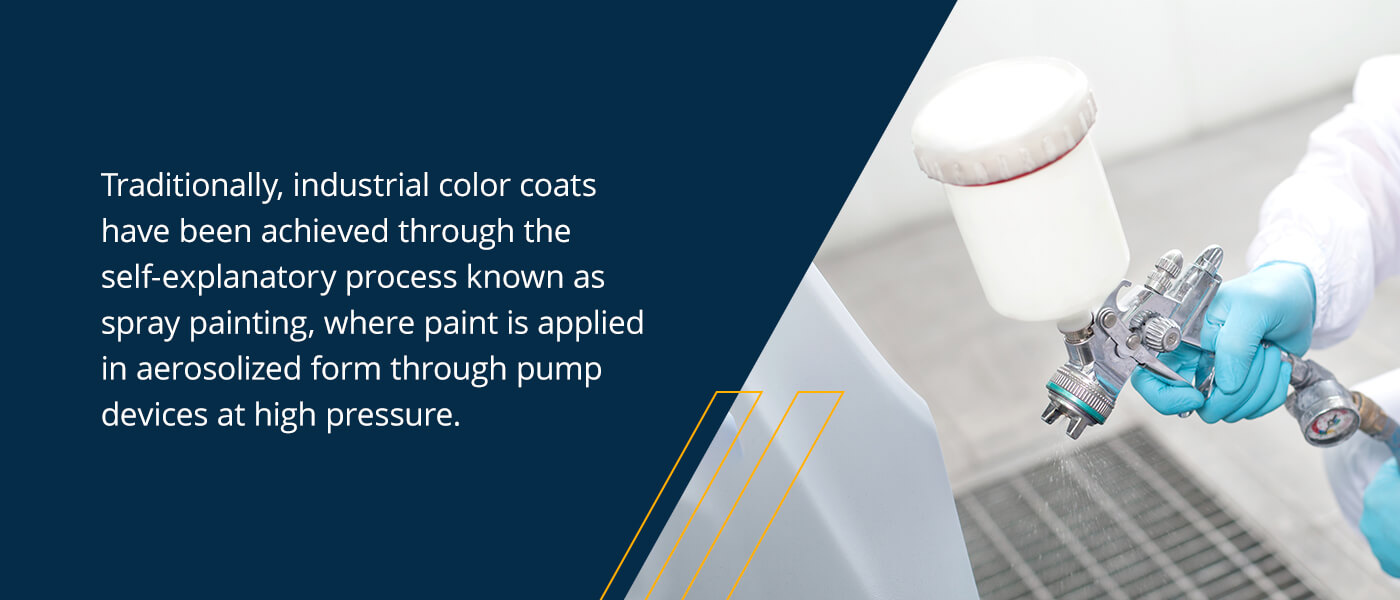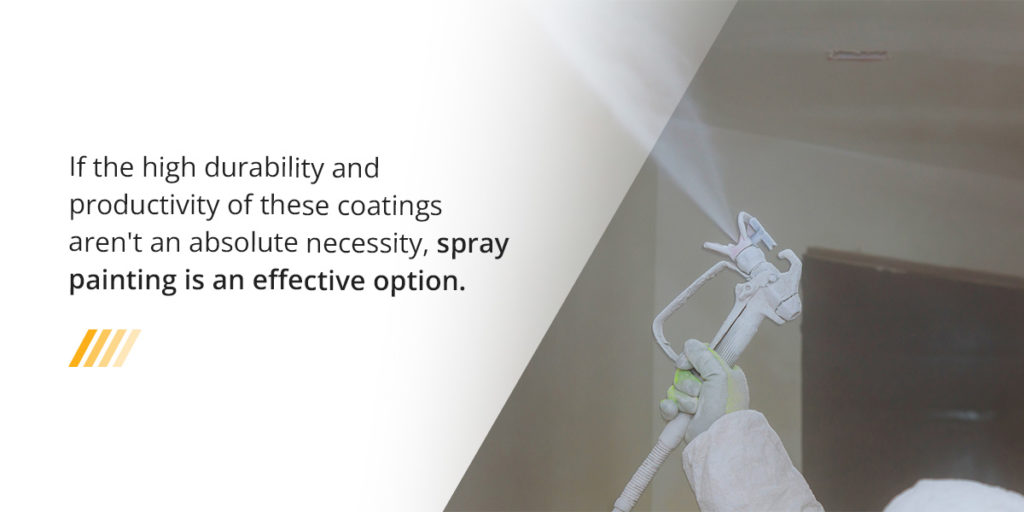When it comes to finishing metal surfaces, whether for appliances, aircraft, or automobiles, there's always a debate about whether to choose powder coating or traditional spray painting. Both methods have their own set of advantages, and understanding the differences between them is key to making an informed decision. Contact Us Powder coating is a modern finishing technique that uses colored powder instead of liquid paint. This powder is sprayed onto the surface and then heated to form a durable and uniform coating. The powder can be made from various materials like acrylic, polyester, epoxy, or polyurethane. Compared to spray paint, powder coating provides a thicker and more consistent finish. Although you can find powder coat spray cans for minor touch-ups, they're generally not recommended for heavy-duty applications. You'll notice powder coating on many everyday items, including stoves, refrigerators, washing machines, tables, and lamp bases. It's also widely used in the automotive industry during the final assembly phase. Powder coating can be achieved using either thermoplastics or thermosets. Thermoplastics rely solely on heat to melt the powder into a solid coating, while thermosets involve chemical reactions during the application process. Despite these differences, the end results are very similar. In both cases, the powder is heated to create a durable finish on the chosen surface. Here’s how the powder coating process works: Powder coating is far more efficient than spray painting due to the electrostatic process, which minimizes waste by up to 95%. Most of the powder ends up adhering to the intended surface, and any leftovers can be reused in future applications. This level of conservation is simply not possible with spray painting, where excess paint often goes to waste. Another similar method is electrostatic painting, which shares many principles with powder coating. However, unlike powder coating, electrostatic painting does not require baking to cure. So, how effective is powder coating? Powder coatings are robust, visually appealing, long-lasting, and versatile. Here are the key benefits: Despite its advantages, powder coating isn't without its drawbacks: However, some of these limitations can be overcome. Advanced product modeling, enabled by 3D imaging, can help avoid issues like re-touching on already-coated components. Having final-assembly engineers on your design team can also streamline the powder coating process. If you're considering switching to powder coating over traditional paint, there are several factors to consider when purchasing supplies: While powder coating has unique considerations compared to liquid paint, taking the right steps can yield a superior and advantageous finish for a wide range of metal components. Spray painting has traditionally been the go-to method for applying industrial color coats. This process involves atomizing paint into a fine mist and applying it to a surface under high pressure, usually through pneumatic-powered tools or machinery. Before spray painting, the metal surface must be cleaned of grease and dirt, followed by a wet blast treatment of around 15-20 micrometers. This ensures an even, consistent coat. The benefits of spray painting include: Despite its benefits, spray painting has its downsides. Its finishes are less durable than powder coatings and often require touch-ups over time. Additionally, achieving an even coat with spray paint is more challenging. It tends to leave visible marks, drips, and uneven coverage unless multiple layers are applied. In the debate over powder coating versus painting, several factors come into play. How durable is powder coating? Which is better for your project? The answer often depends on which method best meets the following criteria: From an economic perspective, powder coating shines due to its efficiency. With a general transfer efficiency of 60-70%, most of the powder used in a given application serves its intended purpose. In contrast, spray paint has a transfer efficiency of only 30-35%, leading to significant waste. Even when considering leftover materials, powder coatings allow for recycling, as unused powder can be collected and reused in future applications. This conservation is impossible with spray paint, where excess material is often lost. While spray paint may initially cost less than powder coatings, the added expense of wasted materials could justify the higher upfront cost. It's essential to weigh your budget against project demands. Compared to spray painting, powder coating is safer since the polymer powder used is inert and non-toxic. Spray paint, on the other hand, contains toxic solvents and volatile organic compounds that can pose health risks if inhaled. Although protective gear is necessary for powder coating, the process is generally cleaner and poses fewer health risks. However, it's vital to prevent the powder from coming into contact with your skin, which is easily achieved due to the low amount of overspray generated. Additionally, spray paint requires careful storage due to its flammable nature, which can be challenging in certain facilities. Powder coatings eliminate this concern. Powder coatings are environmentally friendly beyond just the application process. Since they contain no toxins or volatile organic compounds, unused powder does not emit greenhouse gases, regardless of whether it's used or not. Most of the powder supply eventually gets utilized, reducing landfill waste. Conversely, each spray paint application releases toxins into the atmosphere. From a mechanical standpoint, powder coatings offer greater strength and flexibility than spray-painted finishes. Powder finishes are thicker and more resistant to cracking or peeling. They are also more flexible, making them ideal for items that undergo frequent movement or vibration, such as vehicles. Powder coatings provide superior resilience against impacts from stones, debris, and other hazards encountered by moving vehicles. While a thick coating is beneficial for durability, some projects may require thinner layers for functional or aesthetic reasons. Powder coatings are not ideal for thin coats, as attempting to thin the polymer typically results in a rough, bumpy surface. Powder coatings accelerate production due to their quick curing time. Unlike spray paint, which may take days to dry completely, powder coatings cure in 20 minutes or less. A powder-coated part can be put to use even before cooling down from the oven. At large facilities with tight deadlines, powder coatings enable timely completion of projects. Smaller businesses with more flexibility may find spray painting a viable alternative. When it comes to color matching, liquid paint offers the advantage of displaying its final, dry-state colors immediately. This allows for precise mixing and accurate color reproduction. Suppliers can easily blend primary and secondary colors to achieve exact matches or adjust tints, tones, and highlights. By contrast, powder colors require specialized production runs. The hue of a powder color depends on the polymers used, making it difficult to predict the outcome in advance. Unlike liquid paints, which blend seamlessly, mixed powders tend to form speckled combinations rather than uniform hues. Both paint and powder finishes protect metal surfaces from corrosion. A solid coat prevents rust and eventual damage to the metal. Since powder finishes are stronger and more durable than paint, they generally offer superior, long-lasting protection. Moreover, powder coatings retain their colors longer due to the polymer's resistance to chalking caused by moisture, heat, and UV rays. Polyester-based powders are particularly effective at resisting chalking. Each method excels in different textures. While both can produce glossy finishes, liquid paint is easier to achieve. Thin powder coats feel more textured, resembling the skin of an orange, while thicker coats become smoother. Choose the method that best suits your desired texture. Powder coating requires electrostatic equipment and curing ovens, which can be costly investments. Spray painting, on the other hand, only needs a spraying system and a drying area. For smaller businesses, the equipment demands of powder coating can be daunting. Consider whether the enhanced durability and productivity of powder coatings are necessary for your projects. If not, spray painting remains a practical option. The decision between painting and powder coating ultimately depends on your product's needs. Both methods can produce smooth, high-quality finishes on a variety of surfaces. At Finishing Systems, we offer a range of finishing equipment for industrial use. Customizable Wheels,Custom Magnesium Wheels,Custom Wheel,Forged Magnesium Wheels Shamora Material Industry , https://www.shamorawheels.com
Powder Coating vs. Paint
Updated: March 20, 2023
Understanding Powder Coating

Advantages of Powder Coating
Key Considerations for Powder Coating Materials

How Does Spray Painting Work?
Which Is Better: Paint or Powder Coating?
1. Cost Efficiency
2. Safety
3. Environmental Impact
4. Mechanical Strength
5. Productivity
6. Color Options
7. Reliability
8. Texture
9. Equipment Requirements

Buy Powder Coat or Spray Paint Equipment From Finishing Systems
Powder Coating vs. Painting: What's the Difference?